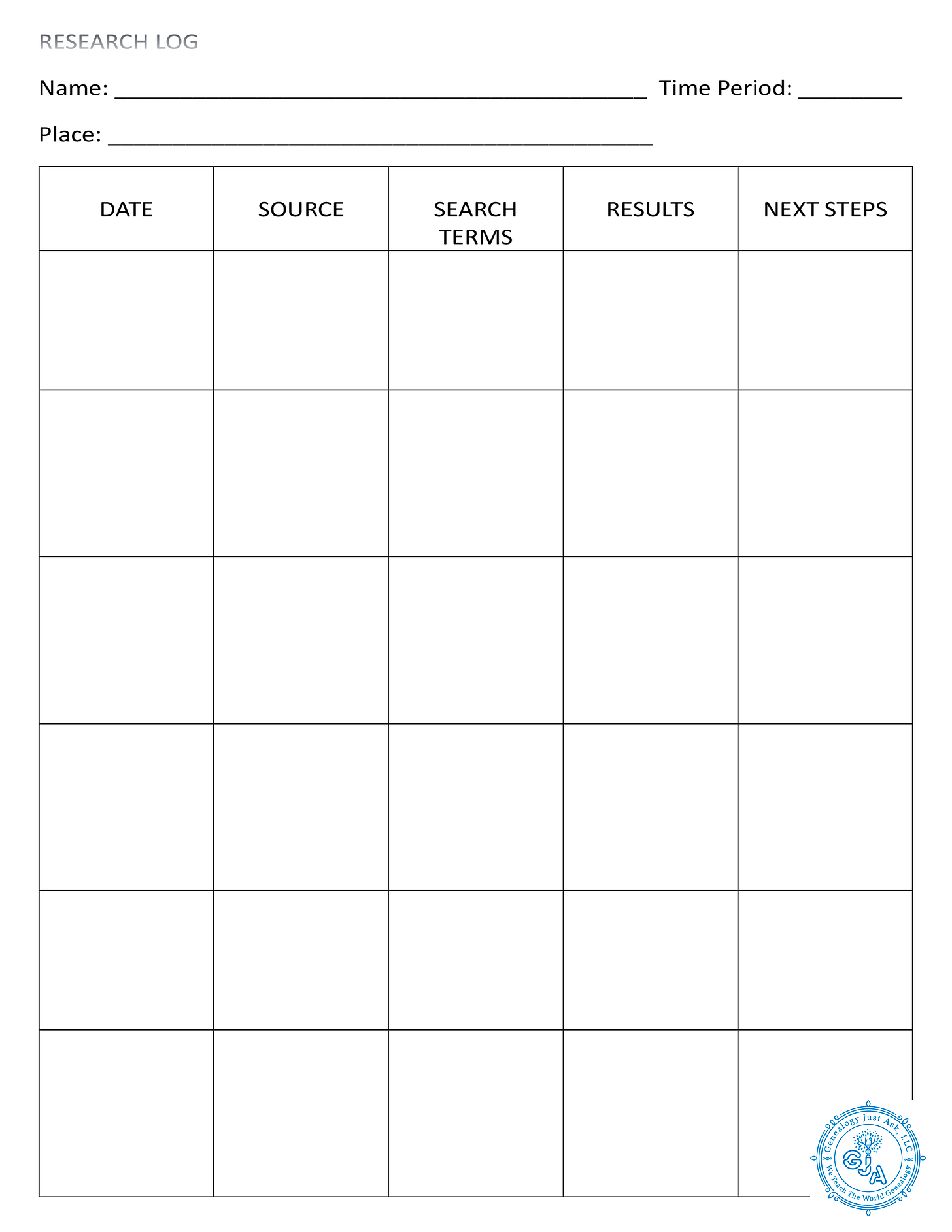Family History Research Checklist for Beginners
You'll be making great strides in discovering your family history
Family history research can be a rewarding and fulfilling journey, connecting you with the stories and experiences of your ancestors. If you're new to genealogy, it might feel overwhelming at first. Fear not! This blog post will guide you through a step-by-step checklist for beginners to kickstart your family history research effectively.
Step 1: Gather Information You Already Have
Begin your journey by compiling the information you already know about your family. This simple yet essential first step will lay a strong foundation for your research.
Start by writing down names, birth dates, and locations of all your relatives. Don't forget to dig through any old family documents you may have access to, such as birth certificates, marriage records, and family letters. These documents may provide a treasure trove of information and evidence for your family tree.
Additionally, collect family photos and note any names or events inscribed on the back. These snapshots often reveal more than just faces; they can capture pivotal moments in your family’s history.
Remember, keeping sources for everything you collect is crucial. For further guidance on documentation, consider reading Evidence! Citation & Analysis for the Family Historian by Elizabeth Shown Mills, which can help you understand how to properly document your findings. Link to book.
Understanding the jurisdictions in your research area is crucial for successful genealogy work. For example, if you're researching in Ohio, it's important to specify the exact location — such as Cuyahoga County, Ohio. Knowing this detail is vital because:
If someone is assisting you with your research, they’ll need to know all relevant jurisdictions.
Records can often be found at multiple levels of government — county, state, and federal — so identifying the correct location helps you access the right resources.
This is especially important when using the Research Wiki, as it guides you to the appropriate records based on jurisdiction.
Step 2: Talk to Relatives
Your family members can be invaluable resources. Interviewing older relatives can uncover stories and insights that connective you to your family's past. These conversations often bring surprising discoveries, including family traditions, origins, and significant events that may not be documented elsewhere.
When you're interviewing older family members, ask open-ended questions. For instance, "What are some traditions our family has celebrated?" or "What do you remember about our ancestors?" Record their memories to preserve those stories for future generations.
You can also visit FamilySearch Memories to upload photos, stories, or documents. This platform ensures that cherished family moments are stored and shared with all relatives efficiently.
Step 3: Start Building Your Family Tree
Once you've gathered information and stories, it's time to map everything out. Use a family tree template or online tool such as FamilySearch.org, Ancestry.com, or MyHeritage.com to begin organizing your findings into a structured format.
Start with yourself, then work your way up through generations: parents, grandparents, great-grandparents, and so on. Organizing the information into generations will help you visualize your family's lineage while enabling you to easily spot gaps where additional research may be necessary.
If you ever get stuck, don't be afraid to seek additional assistance. Online forums and communities can often provide the necessary guidance to overcome common obstacles.
Step 4: Explore Historical Records
With a family tree in hand, it’s now time to dive deeper into historical records. Visit local archives, libraries, and search online databases for official records related to your ancestors. Focus on vital records like census records, military service files, immigration documents, and death certificates, as these can provide vital clues about your family's history.
If you're unsure where to begin, the FamilySearch Research Wiki offers guidelines and tips on locating records in specific regions. This resource is beneficial for understanding where and how to find genealogy records effectively.
Step 5: Stay Organized
The secret to a successful family history research project is staying organized. Too often, genealogists may become overwhelmed by the quantity of information collected.
Create labeled folders, both physical and digital, for organizing documents, photos, and records neatly. Use a research log to track the sources you've explored and the findings made. Here’s a simple format to consider
How to download the Research Log:
Click on the Research Log.
Right click on the Research Log.
Select Save image as.
Change the file name to: Research Log.
Click save.
Tips for Using This Log:
Keep It Detailed: Document every source you search alongside the exact terms used. This helps prevent duplicate searches and maintains thorough research practices.
Track Results: Regardless of whether you find something of relevance, make sure to record your discoveries. Negative results can guide you toward new strategies.
Plan Ahead: Use the "Next Steps" column to list your goals for future research—this keeps your studies focused and structured.
As you explore records, remember to consult the FamilySearch Research Wiki for valuable insights regarding record locations.
Step 6: Join Genealogy Communities
One of the best ways to enhance your genealogy experience is to engage with other enthusiasts. Join Facebook groups, forums, and local societies dedicated to family history. Sharing your findings, asking for advice, and learning from experienced researchers can significantly enrich your knowledge.
Consider exploring the Genealogy Just Ask - Robin Substack Chat to ask Robin your genealogy questions directly and gain personalized insights. You might uncover new strategies or resources that you hadn’t previously considered.
Additionally, attend local or virtual genealogy workshops to expand your understanding and meet others who share your passion for uncovering family stories.
Step 7: Preserve Your Discoveries
After investing considerable time and effort in your genealogy research, it’s essential to ensure that your discoveries are preserved for future generations. You can do this by compiling your findings into a printed family history booklet or a story collection to share with relatives.
Continuously update your records as you uncover more information about your ancestors. This not only helps you keep track of your research but also ensures that your family history remains an evolving and dynamic record, much like the lives of those who lived it.
By following these steps and utilizing the resources available, you'll be well on your way to uncovering your family history. Enjoy the process and rejoice in the discoveries you make, for they are a testament to your family's legacy.
📚 Unlock Your Family's Story with Confidence! 🕵️♀️
Whether you're just starting out or already deep into your genealogy journey, My Best Genealogy Tips: It's Time to Start! is the guide you need.
✅ Perfect for beginners — no confusing jargon!
✅ Packed with practical tips even experienced researchers will appreciate.
✅ Learn essential family history techniques you may have missed before.
Don't let unanswered questions hold you back. Get your copy today and take your research to the next level!
👉 My Best Genealogy Tips: It's Time to Start!
Start discovering your family's rich history now! 🗂️✨











